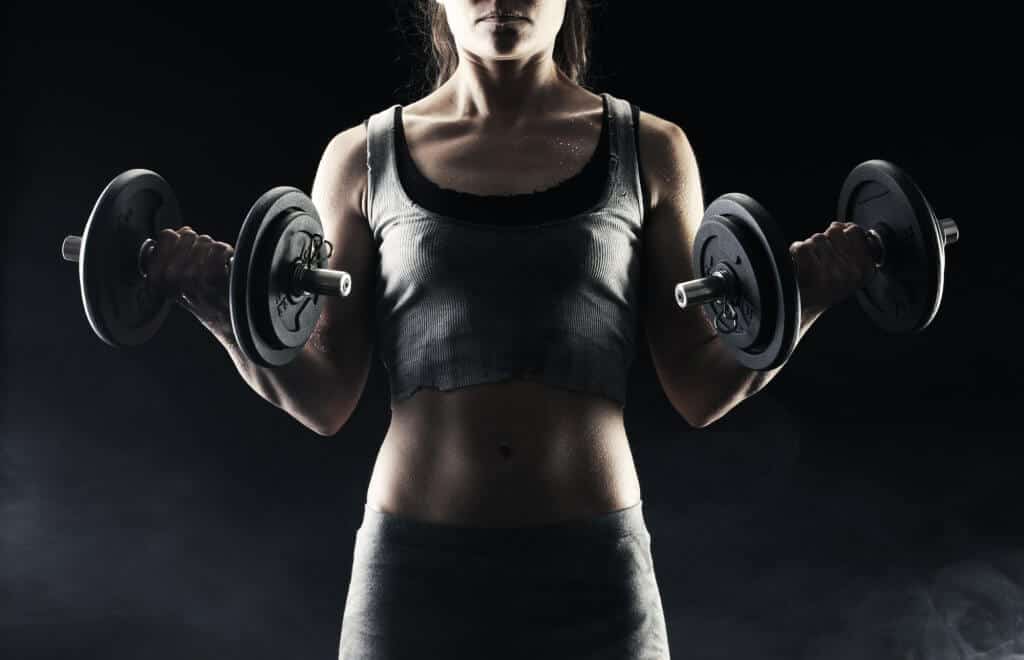
Often times I am asked….
[no_toc]
Is there a right or wrong time that we should be exercising or scheduling workouts while eating one meal a day?
The truth is that there really isn’t a right or wrong answer to this question.
But, the timing or scheduling of your workout can have an effect on your one meal a day routine if you are already struggling with hunger.
There are also many other factors to consider depending on your goals and objectives in your workouts.
Let’s take a look at benefits, tips and frequently asked questions about exercise and workouts while eating one meal a day.
Why Exercising when eating one meal a day is beneficial

Fasted exercise may burn more fat
When your body is in a fasted state, it burns off it’s stored sugar and then starts breaking down fat and converting it into ketone bodies for fuel.
What this means is that you will start burning fat instead of burning sugar for energy.
Many studies have noted that exercising while in a fasted state will burn as much as 20 percent more fat when compared to exercising in a fed state.
Why?
In a fed state, insulin (which regulates the breakdown of fat) will increase in the body. Many research studies show that higher insulin levels have been shown to suppress fat metabolism by up to 22 percent.
Other Potential Benefits:
Exercise in a fasted state may potentially help keep your brain, neuro-motors and muscle fibers biologically young.
The combined effect of one meal a day fasting and exercise may go way beyond helping you to burn more fat and lose weight;
It may help to:
- Boost growth hormone
- Improve body composition
- Boost cognitive function
- Boost testosterone
- Prevent depression
- Turn back the biological clock in your brain and muscles
Do’s and Dont’s while training in a Fasted State
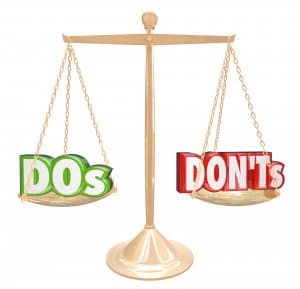
Do’s:
- Workouts should not be longer than 60 minutes
- Consume water before, during, and after the session for optimal hydration
- Listen to your Body (If you feel weak or nauseous stop) – Consider adjusting your intakes/schedule/ or consult a physician.
- If your doing Weight Training or Intense Workouts – Eating your One Meal a Day afterward is very important
- Take into consideration variables such as your age, when you last ate, whether or not you’re pregnant, taking medications, your medical history, level of fitness, and the type of workout you engage in.
- Eat High Protein/Healthy Fats/Non-Starchy Vegetables
Don’ts:
- Workout for more than 60 minutes
- Workout if you have a medical condition – Consult your Physician.
- Do a high-intensity workout if you have low blood sugar – You could feel lightheaded/possibly faint.
- Eat a High Carbohydrate Meal (Could set you up for hunger and cravings)
Avoid Morning Workouts or Training
 Many people like to workout in the early mornings so they can have the rest of the day to do other things. This is a common practice because of many people’s work schedules or family life.
Many people like to workout in the early mornings so they can have the rest of the day to do other things. This is a common practice because of many people’s work schedules or family life.
However, while doing the Omad Diet you are in a fasted state until your eating window arrives during the day.
This can be challenging from a mental standpoint depending how long you wait before your eating window arrives.
Let’s say, for example, your 4-hour eating window is from 3-7pm. You start exercising at 9:00 am and finish shortly after. Imagine finishing your workout and have to wait another 4-6 hours to eat your one meal.
Waiting for your eating window to arrive can be difficult enough for some, but adding in exercise will only increase your appetite.
When is the Best time to workout while eating one meal a day?
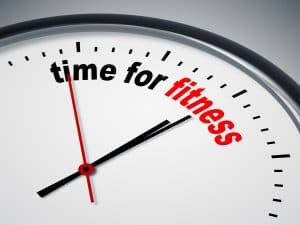 Answer: The ideal time is right before you eat your one meal.
Answer: The ideal time is right before you eat your one meal.
If you usually eat your one meal a day around 5 pm, then consider doing your workout routine or exercise around 3 or 4 pm.
In an ideal situation, you want to keep no more than one hour between when you conclude your workout and your meal time.
On the flip side, you can also do your workout about an hour after you eat your one meal.
For example. Let’s say you finish eating your one meal at 6 pm. You can head to the gym and start your workout by 7 pm while finishing close to 8 pm.
By the time you return home, it will be close to bedtime.
What can I do if I can only workout in the morning?
A common question is…What if I work during the day and my only option is the early morning because of job and family commitments?
You may have to pickup the kids, attend social events, or even prepare a meal for the entire family in the later evening.
What kinds of tips or tricks can you do to make through the day until your eating window arrives?
Tip – Stay hydrated
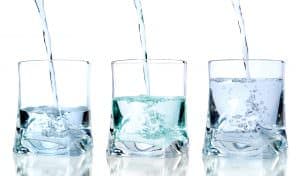 Drinking plenty of allowable fluids can help the hunger pangs and help nullify your appetite.
Drinking plenty of allowable fluids can help the hunger pangs and help nullify your appetite.
Sparkling water can be especially helpful as the carbonation can help you feel fuller for longer periods of time.
Try to keep a bottle of water next to you throughout the day if you are working.
Another strategy would be drinking small amounts of bone broth. Bone broth can be very fulfilling and can help ease those hunger pangs.
What can I do if I can’t workout in the Afternoon?
If you follow most of my advice, this is going to put your workout in the later afternoon.
But I realize this isn’t realistic for many people working a day job.
Many people do not like working out later in the day or think that it is not as beneficial as earlier in the day.
However, evening workouts have many benefits.
The first benefit is going to be a less crowded gym or workout facility.
This study shows how anaerobic capacity increases when workouts are performed in the evening which leads to a more productive workout.
Workout when it’s best for you
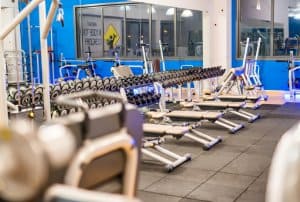
When you get started eating one meal a day I always advise that you plan your routine for what works best for you.
Everyone has different schedules, commitments, and various priorities. What may work for one person, may not work for someone else.
If the morning works best for you, then, by all means, perform your workout in the morning.
Can I take BCAA’s for my workout while doing the Omad Diet?
I get this question a lot in regards to BCAA’s and does it break your fast while doing Omad?
The answer is Yes BCAA’s will break your fast if you take them outside your eating window.
Let me explain…
Branched-chain amino acids are supplements that are designed to supply the body with essential amino acids.
BCAA’s are designed to assist your body in preserving muscle mass.
Most BCAA’s contain 3 of the following amino acids
- Valine
- Leucine
- Isoleucine
Why do BCAA’s break my fast?
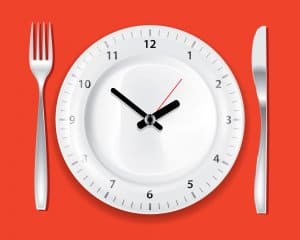 BCAA’s are amino acids in which are macronutrients. Amino Acids are made up of protein.
BCAA’s are amino acids in which are macronutrients. Amino Acids are made up of protein.
So, in definition by either powder or tablet form, it would be considered to be eating by consuming them.
BCAA’s also have a caloric value to them.
1 gm of BCAA = 6 Cal
So if you only took 20 grams of BCCA’s, you would consuming over 120 calories and wouldn’t even realize it.
If you even took 10 grams of powder or supplement tablets, that would be consuming 60 calories.
BCAA’s will also trigger an insulin response by just the fact of the units containing proteins themselves.
With the objective of fasting to keep your insulin levels very low, this would be defeating the purpose and you would be technically breaking your fast.
A Deeper Look at BCAA’s and Intense Weight Training while on the Omad Diet
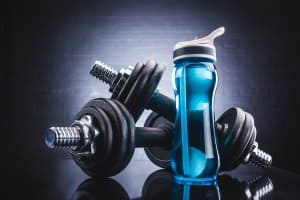 What if you are doing heavy or intense weight training while on Omad and need the benefits that BCAA’s provide?
What if you are doing heavy or intense weight training while on Omad and need the benefits that BCAA’s provide?
This is where I would remind someone about why they are considering taking BCAA’s in the first place.
BCAA’s will help protect muscle loss and at the same time will help you gain muscle as well.
So what can I do to get these benefits as well as eating one meal a day?
Here is a work around…
Take your BCAA’s close to when you are about to break your fast.
This way it would be close to your eating window or meal time and you would still preserve the many benefits of fasting while eating one meal day.
Here is what a preferred schedule would look like:
Here is the order:
BCAA supplement ==> Workout (Intense Workout) ==> One Meal of the Day
Here is an example of a Schedule:
01:45 PM -02:00 PM – 15 minutes pre-workout. Take BCAA supplement
02 PM – 3 PM– Your Training hour
4 PM – Your one meal of the day
BCAA’s do facilitate protein synthesis and boosts metabolism. This is a nice trade-off.
If you follow a similar schedule like the one above, it should not derail your weight loss and muscle gain, but should actually boost it.
Do I need to take BCAA’s if I’m working out while doing the Omad Diet?
This is going to depend on your objectives.
Here some reasons why someone might take BCAA’s while doing Omad
- Your goal is to build Muscle
- Doing Weight Training
- Involved in highly competitive sports that require intense exercise
- Wanting to shed fat
- Want to Preserve Muscle
- Diet is Deficient in Protein
- Involved in Resistance Training
- You are preparing for a Bodybuilding Contest
If you are doing Omad to simply lose weight and light exercise, then BCAA’s will not be necessary.
Which BCAA Supplement do you recommend?
I recommend the following BCAA supplement:
Why I like it:
It makes a great choice for your fitness goals with zero carbs and zero sugars.
It has 4 delicious flavors that include:
- Blue Raz
- Cherry Limeade
- Fruit Punch
- Peach Lemonade
It is also gluten and dairy free and does not contain soy.
Eat high-protein meals if you are working out while Eating One Meal a Day
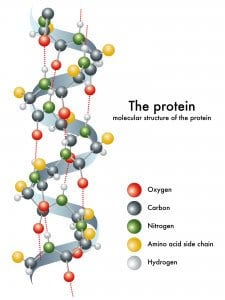 If your goal is to build muscle while on the Omad Diet, be sure you are including high protein in your one meal. Regular protein consumption is very important for muscle synthesis during the day when your muscles are repairing themselves for growth.
If your goal is to build muscle while on the Omad Diet, be sure you are including high protein in your one meal. Regular protein consumption is very important for muscle synthesis during the day when your muscles are repairing themselves for growth.
Eat Healthy Carbohydrates
Eat healthy carbohydrates in your Omad Diet such as whole-grain cereals (with low-fat or skim milk), whole-wheat toast, low-fat or fat-free yogurt, whole grain pasta, brown rice, fruits, and vegetables.
Other Meal Tips (For Muscle Building):
Avoid sugar, processed fructose, and grains. Try to avoid most processed foods.
Eat plenty of whole foods, ideally organic, and replace the grain carbs with:
Large amounts of fresh organic locally grown vegetables
How much protein should I be including in my meals if my goal is to build muscle?
Let’s take a look at a research study conducted by McMaster University.
In their paper, it shows a protein intake from 1.3 – 1.8 grams per kilogram of the bodyweight is enough to stimulate maximum protein synthesis.
They do mention, however, that higher protein may be necessary in cases of frequent or higher intensity training in the cases of dieting for fat loss.
Another similar study that was conducted by the University of Western Ontario showed the same result of 1.6 – 1.8 grams per kilogram of body weight could be enough for athletes, but that higher amounts of protein may be warranted based on many factors. These include the workout intensity, protein quality, gender, age, training history, carb availability, and more.
An important note to take from these studies is that there probably is not a “one size fits all” solution.
A common “Gym Lore” that has been around for a long time can offer some insights into these findings.
- 1 gram of protein per pound of body weight (2.2 g/kg of BW) per day has been a bodybuilding rule of thumb for decades.
- Higher levels of protein intake, usually in the range of 1.2 – 1.5 grams per pound of body weight (2.6 – 3.3 g/kg BW) per day, are commonly recommended when “cutting” to lose fat.
Some may think those numbers sound high but consider this research published earlier this year, and conducted by AUT University.
Can my Body absorb all my daily protein intake in one meal?
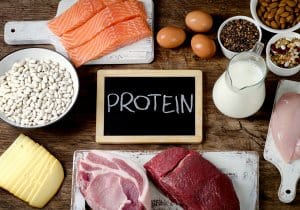 This is another frequent question.
This is another frequent question.
There are studies that support the findings that you can.
In this study, researchers took 16 young, healthy women and separated them into 2 groups.
One group ate 79% of their protein (about 54 grams) in one meal. The other group spread their protein intake over the course of 4 meals throughout the day.
The women in the groups weighed, on average, around 120 pounds. This means that the 54 grams of protein in their one meal was high to their relative body weight.
After 2 weeks, researchers did not find any difference between in protein turnover, synthesis, or breakdown between the two groups.
This study shows subjects in 2 groups as well. One ate a normal diet while the other fasted for 20 hours and then had 4 hours to eat their meal for the day.
After 14 days, they found no difference in the protein metabolism between the 2 groups.
Other similar findings have been shown in several other studies as well.
The conclusion from these findings show that if there is a limit on how much protein your body can absorb in one meal, it’s really high and should not be an issue.
The takeaway is that you should simply tailor your one meal a day routine to the amount of protein you need without the need to worry if you are eating too much protein in your only meal.
Which Foods have high Protein that I can include in my One Meal a Day?
The following are great high protein foods you can include in your one meal a day:
Tilapia
Protein Content: 21 g per 3-oz. serving
Anchovies
Protein Content: 24 g per 3-oz. serving
Light Tuna
Protein Content: 22 g per 3-oz. serving
Sardines
Protein Content: 21 g per 3-oz. serving
High Protein Meats
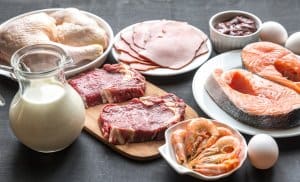 Steak (Top Or Bottom Round)
Steak (Top Or Bottom Round)
Protein Content: 23 grams per 3 oz. serving
Ground Beef (90% Lean)
Protein Content: 18 grams per 3 oz. serving
Pork Chops (Boneless)
Protein Content: 26 grams per 3 oz. serving
Chicken Breast (Boneless And Skinless)
Protein Content: 24 grams per 3 oz serving
Turkey Breast
Protein Content: 24 grams per 3 oz. serving
Corned Beef
Protein Content: 24 grams per 3 oz. serving
Canned Chicken
Protein Content: 21 grams per 3 oz. serving
Roast Beef
Protein Content: 18 grams per 3 oz. serving
Canadian Bacon
Protein Content: 15 grams per 3 oz. serving
Chorizo
Protein Content: 21 grams per 3 oz. serving
Pepperoni
Protein Content: 18 grams per 3 oz. serving
Roasted Turkey Breast
Protein Content: 18 grams per 3 oz. serving
Beef Jerky
Protein Content: 13 grams per 1 oz. serving
High Protein Plant-Based Foods
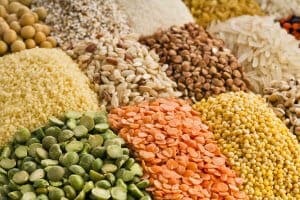 Navy Beans
Navy Beans
Protein: 20 grams per 1 cup serving
Dried Lentils
Protein: 13 grams per 1/4 cup serving
Peanut Butter
Protein: 8 grams per 2 tbsp serving
Mixed Nuts
Protein: 6 grams per 2 oz. serving
Bean Chips
Protein: 4 grams per 1 oz. serving
Tofu
Protein: 12 grams per 3 oz. serving
Edamame
Protein: 8 grams per 1/2 cup serving
Green Peas
Protein: 7 grams per 1 cup serving
Wheat Germ
Protein: 6 grams per 1 oz. serving
Soba Noodles
Protein: 12 grams per 3 oz. serving
Quinoa
Protein: 8 grams per 1 cup serving
Can I supplement a Protein Powder to achieve my daily protein goals on the Omad Diet?
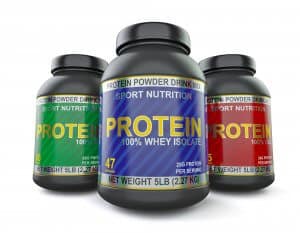 As mentioned earlier, protein will break your fast. Therefore, you will want to drink your protein shake as your one caloric beverage with your one meal a day.
As mentioned earlier, protein will break your fast. Therefore, you will want to drink your protein shake as your one caloric beverage with your one meal a day.
Which kind of Protein Powder do you Recommend?
There are many debates between the common protein powders of Whey and Casein.
Both of these powders are designed to help people build muscles.
However, I think that Casein protein is the better choice for those on the Omad Diet.
Why do you recommend Casein Protein Powder?
The main reason that Casein protein is so beneficial for a Omad diet is the fact that it takes longer to digest than Whey.
It is a slow-burning type of protein that requires several hours more to process than Whey protein.
As a result, the benefits of Casein protein will typically last a lot longer and remain strong when Whey protein starts to fail.
This slower digestive process helps to keep high-quality amino acids in your body longer. Because of this, they will stay in your muscles for a more extended period.
This can help provide your muscles with the amino acids they need to maintain their gains.
Other Casein Protein Powder Benefits:
Beyond these benefits, Casein also helps to:
- Increase your fat loss
- Boost the strength of your bones and teeth
- Promote a healthier sleeping schedule
- Improve exercise recovery
The study, “Protein Timing and Its Effects on Muscular Hypertrophy and Strength in Individuals Engaged in Weight-Training,” studied how Casein and Whey protein helped to boost a person’s recovery after working out.
They found that Whey protein combined with Casein helped to increase muscle mass and boost protein synthesis. They suggested a program of 10-12 weeks for maximum effectiveness.
I recommend the Casein Protein Powder below in your Omad Diet
Give your Routine time to “Settle In”
 As with everything, try not to incorporate too much change at once with your body. Everyone’s bodies are different and some adjust to various workouts and routines faster than others.
As with everything, try not to incorporate too much change at once with your body. Everyone’s bodies are different and some adjust to various workouts and routines faster than others.
Take things slow and try not to expect fast results. This will only leave you frustrated and tired of the process/routine and could cause a complete dietary failure.
Be consistent with your eating window and workout routine to make sure you are getting maximum long-term results.
Declutter your Life
Consider all factors of your life when planning your workout schedule and eating window.
When there is outside stress, health challenges, or any other factors discouraging you from a productive journey, you will be less likely to achieve your ultimate fitness goals.
Final Thoughts
Your body is your vehicle, so it’s very important to keep the engine running when you are working out.
This means fueling up your body by eating the right foods and drinking the right fluids – I can’t stress the importance of this enough!
It’s also very important that you are listening to your body when you are working out.
If you ever feel nauseous or sick, be sure to stop all activity and seek medical attention immediately.
What workouts or exercises have you found to be most beneficial while doing the Omad Diet?
Leave a comment below or visit the Omad Diet Community Forums.



